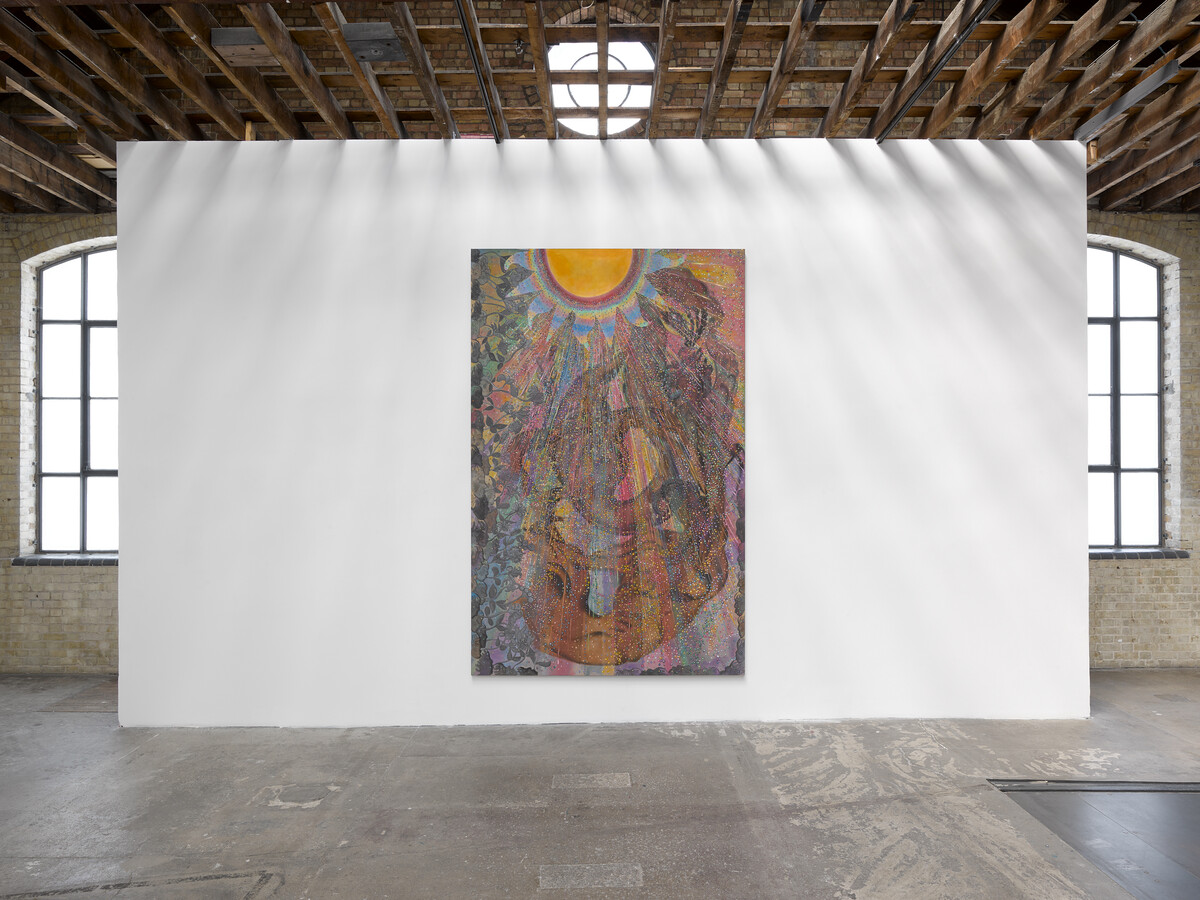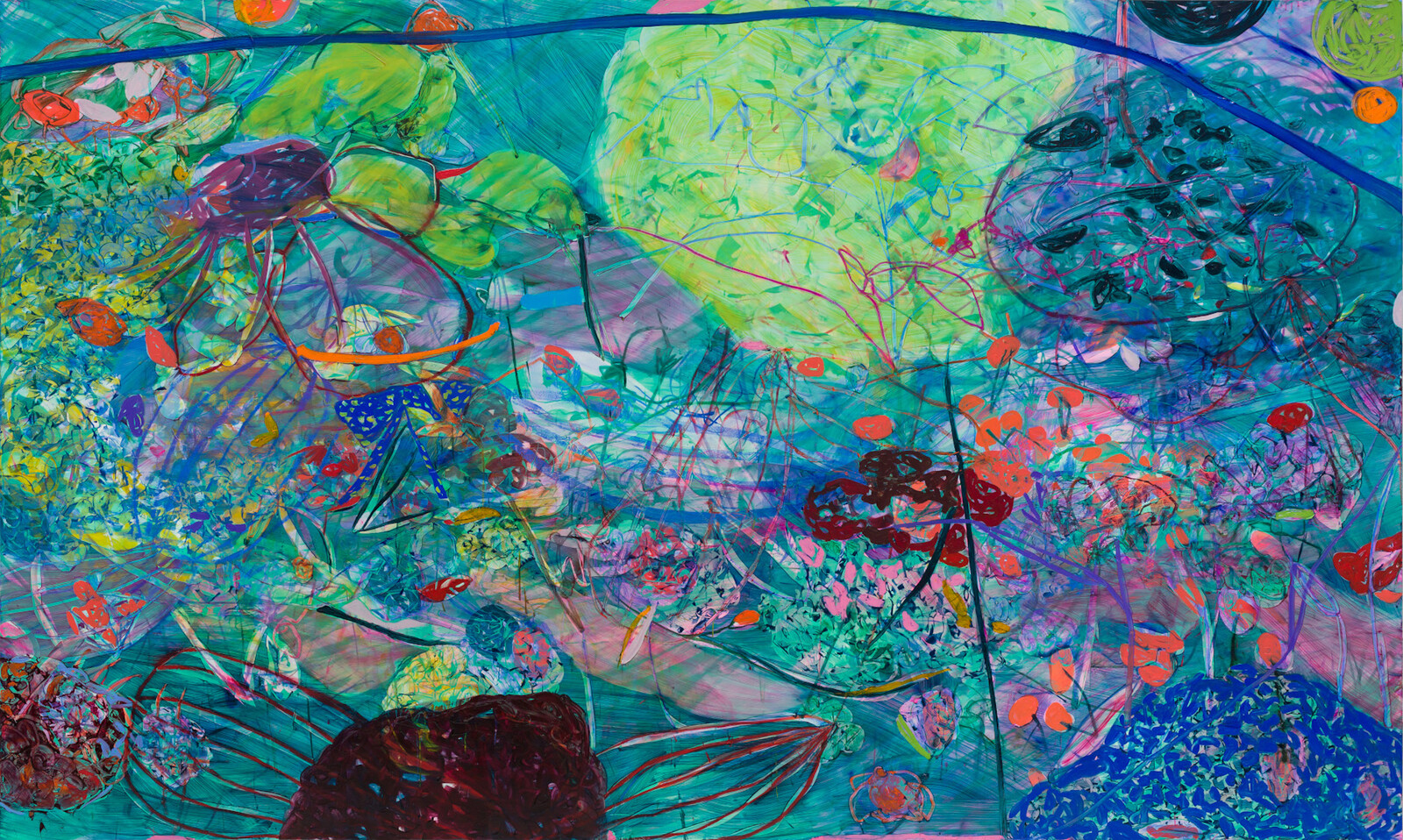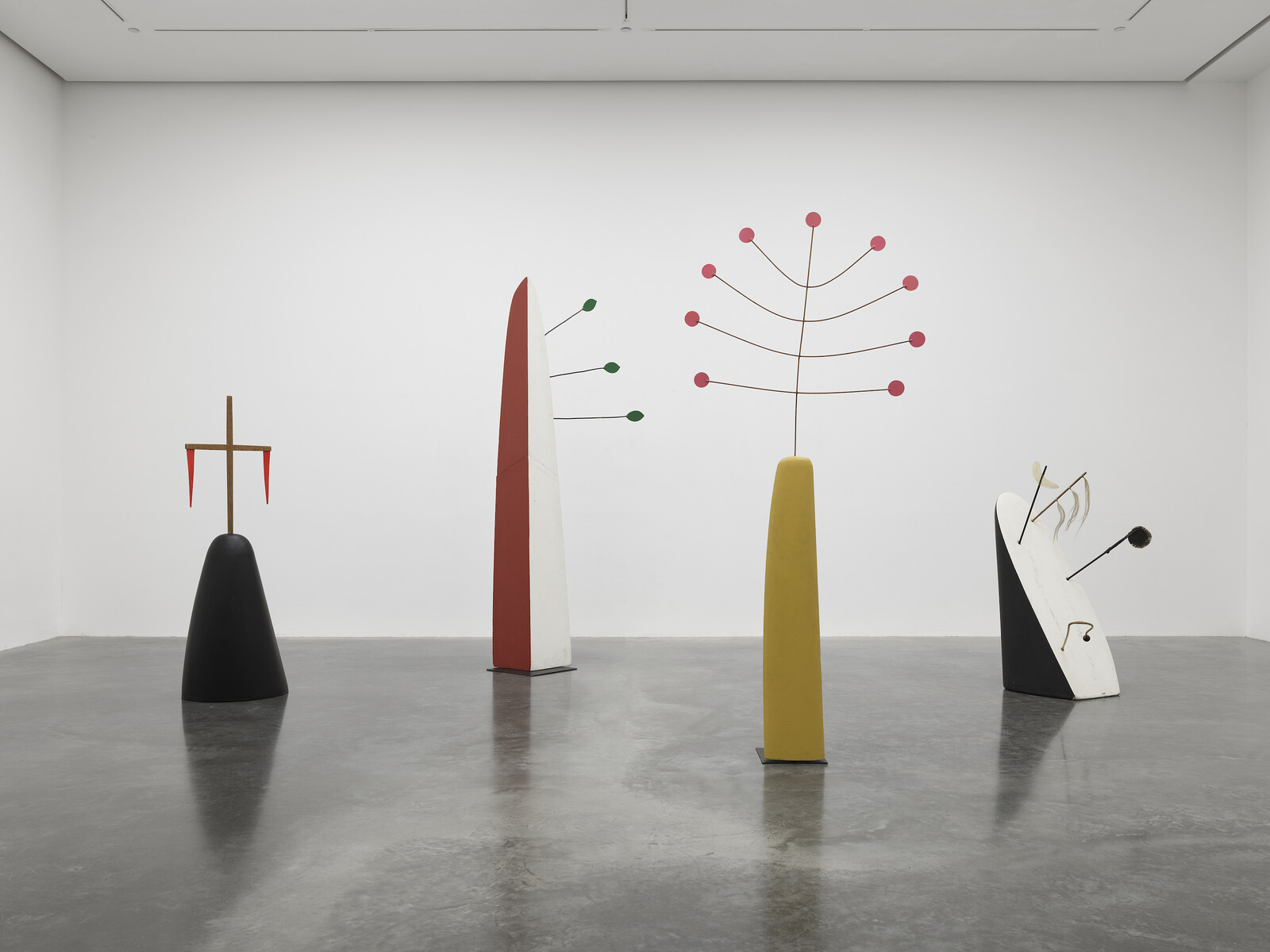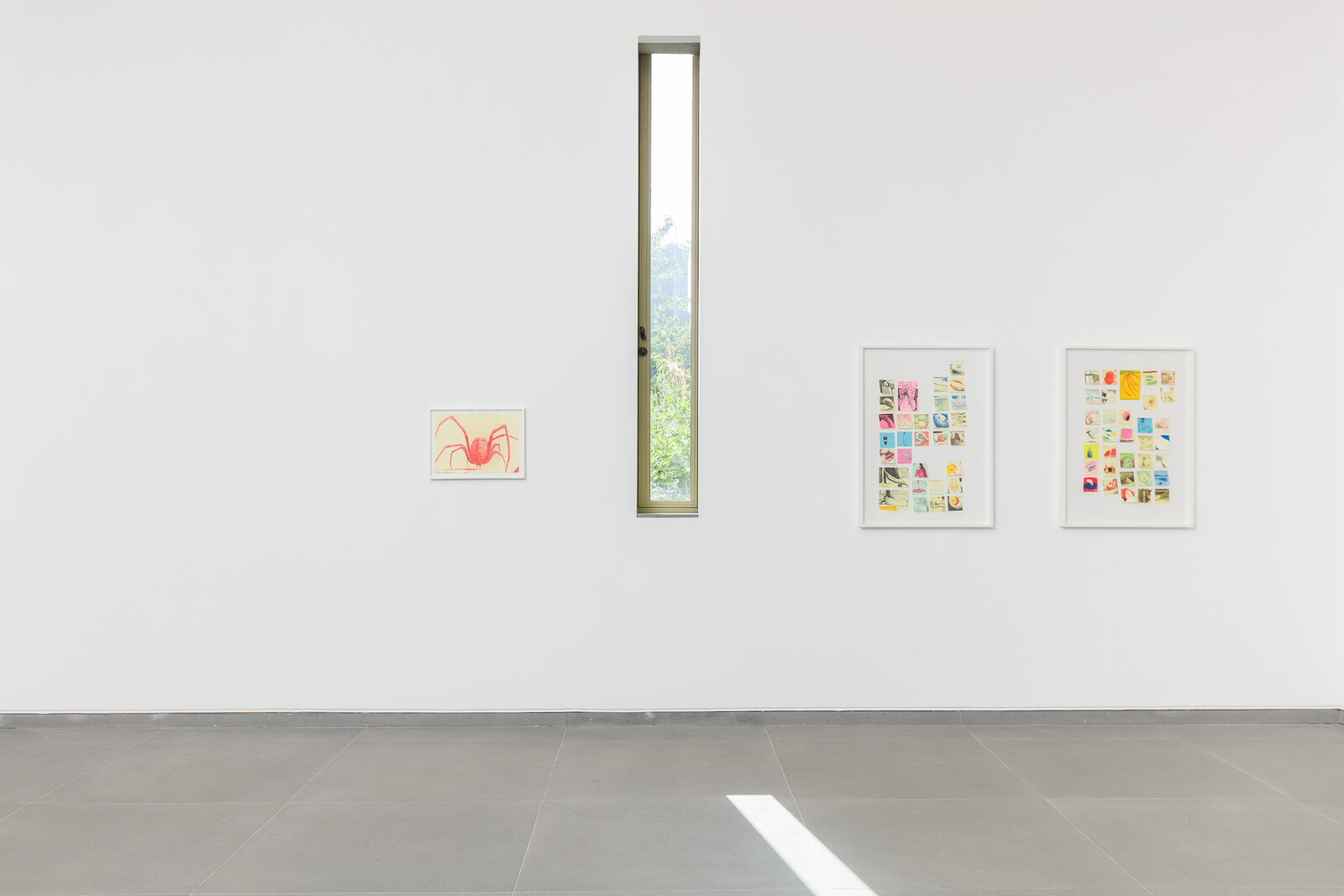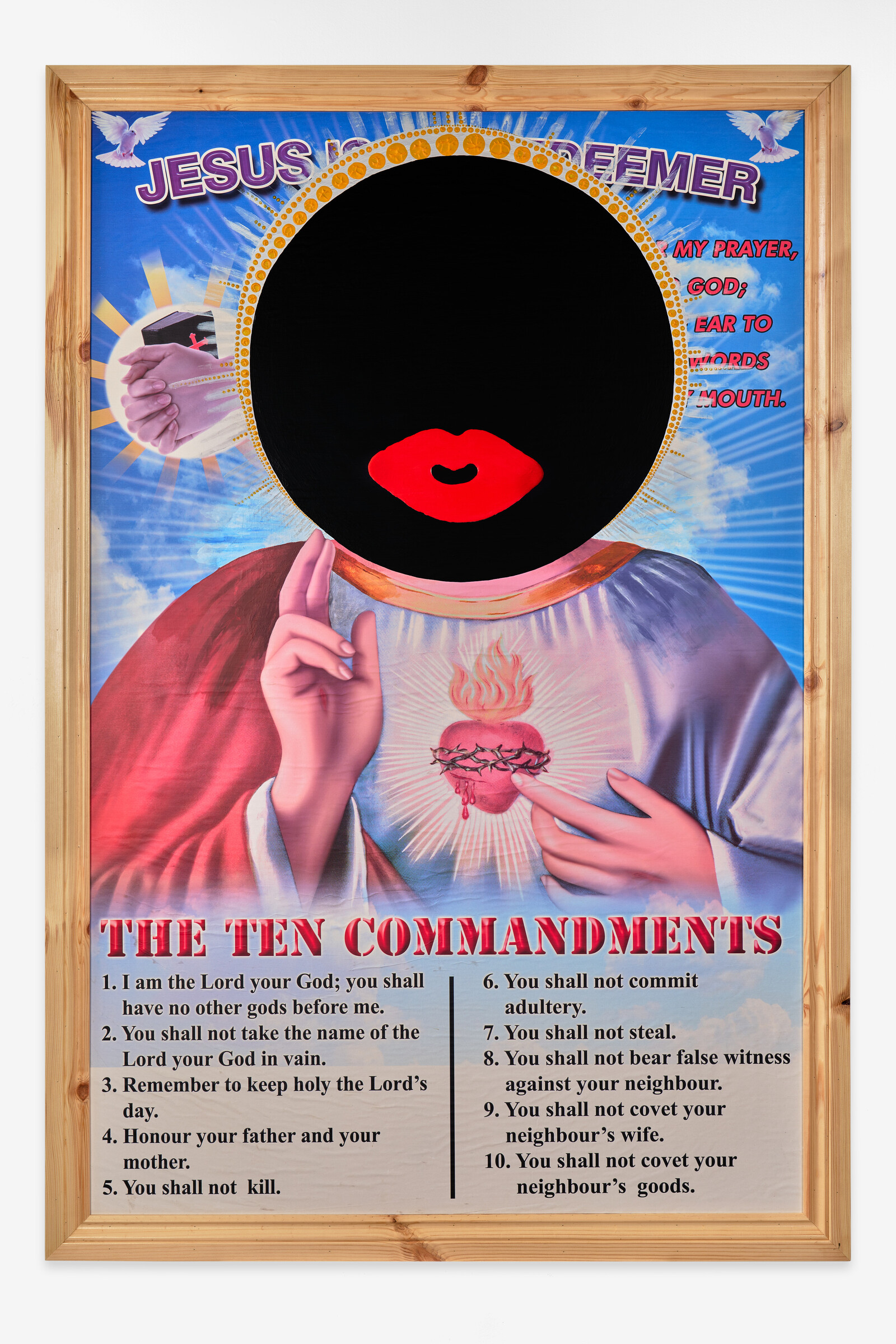This year’s edition of London Gallery Weekend suggested something that initially surprised me: that the joy of seeing multiple shows in one weekend can be less in new discoveries than in meaningful re-encounters. Looking at Jadé Fadojutimi’s three-by-five-meter painting And willingly imprinting the memory of my mistakes (2023)—included in “To Bend the Ear of the Outer World,” an exhibition of contemporary abstraction curated by Gary Garrels at Gagosian—I thought, I still love this. I first encountered Fadojutimi’s work as part of the 2021 Liverpool Biennial; in this more formalist context I can see how the things I loved then—its blending of oil, pastel, and acrylic in one canvas, its massive presence—are in dialogue with painters I’ve been following for years. The invention and freshness of Laura Owens’s approach to painting is confirmed by every re-encounter; I continue to be amazed by how Charline von Heyl’s Circus (2022) evokes its colorful subject through abstract patterns of gray, black, and white.
Many galleries chose to dedicate their London Gallery Weekend shows to painting, and I loved many of the paintings on view. I was impressed with Shaan Syed’s four works at Sundy, which depict forms from the natural world—like the rubber plant—as abstract, repetitive patterns reminiscent of Arabesque design. I discovered Cary Kwok’s humorous small canvases of mundane objects (One Cigarette in an Ashtray – Chapter 2, 2023) and portraits of his friends at Herald Street. At Union Pacific, Nour Jaouda’s seemingly abstract textile pieces tell their stories through their media. The artist collects fabrics discarded from markets in Cairo and London, mixing them with canvas and pure Egyptian cotton to make wall-based collages that speak of a life lived between two cities. Seeing Chris Ofili’s new paintings at Victoria Miro made me think of his 2014 solo show at the New Museum in New York, how it provided me with an organized knowledge of his practice, and how this understanding builds and deepens with each new show of his I see.
Nour Mobarak’s exhibition at Rodeo, “Gods’ Facsimiles” presents small mycelium sculptures housed in wood-and-plaster niches. They represent Apollo, Cupid, Dafne, Venus, and a chorus—collectively (when you add in the epoxy resin snake that slithers across the gallery’s floor) the cast of the opera La Dafne by Jacopo Peri and Ottavio Rinuccini. These are homages to the marble figures commissioned to stand in similar niches when the opera was first performed in Florence in 1598; much larger mycelium sculptures of the cast will be presented as part of Mobarak’s multimedia installation at the Municipal Theater of Piraeus, Greece, in July. They remind me of Bernini’s Apollo and Daphne (1622–25), and not just because of their shared subject; while Bernini makes marble seem like organic matter, Mobarak transforms organic matter into the material of sculpture. They meet in this sense of being completely alive. Also combining performance and sculpture, and also completely alive: White Cube’s show of Isamu Noguchi includes video documentation and photographs from Martha Graham’s dance Dark Meadow (1946), for which Noguchi designed the sets and costumes, with the sculptures from the set on view.
Two other shows compounded different mediums in remarkable ways: at Cabinet, Ed Atkins frames together multiple little drawings (monsters, cookie crumbs, body parts, tiny landscapes) on Post-It notes (titled Children #5, #6, #7, #8, and #9, all 2022–23) ); he also publishes two texts in the gallery pamphlet, treating it as an extension of the exhibition and a work in its own right. At Larry Achiampong’s exhibition at Copperfield, I played videogames with disturbing content: A violent Catholic pilgrimage in Blasphemous (2019); civil war between nativists and an underclass in an imagined version of the USA in BioShock Infinite (2013). The games are included as found objects alongside religious posters of the kind common in markets in Ghana. The faces in these posters have been overpainted with those of the Golliwog dolls that, as a child, Achiampong saw advertised as collectible souvenirs on the jars of a ubiquitous brand of British jam. How to look at this? The popular representation of Jesus as a white man in the posters Achiampong appropriates is the result of European missionaries spreading their religion and its white iconography; that the racist Golliwog dolls were considered acceptable as recently as the 1990s now seems incomprehensible. Just to replicate problematic images does not mean to critique them, but Achiampong’s show (titled “And I saw a new heaven”) alerts us to their strangeness and their prevalence, building a context that encourages viewers to interrogate them. This experience is enhanced by the legibly religious architecture of Copperfield, located in a building that used to house the dining hall for the church next door.
Location also plays a crucial role in Jeremiah Day’s “What is Power?,” presented by Arcade at Flat Time House. Formerly the home of influential British conceptual artist John Latham, it now hosts residencies and exhibitions. Day’s exhibition includes videos, photographs, and archival research about the Lowndes County Freedom Organization, an independent political party dedicated to radical equality founded during the Civil Rights Movement in Alabama scattered through the space. The exhibition brings these still-resonant political ideas into dialogue with Latham’s own commitment to the social potential of art, so that his studio-home was transformed after his death into a center for alternative learning and artists’ residency space. Gallery Weekend, an occasion that encourages seeing multiple exhibitions over a few days, might seem like a proposal for quick, inattentive viewing, a hit list, an affair. But it can also be an opportunity to be conscious of these different points of meeting, how connections are made in space, and how they grow over time.
